Have you ever noticed tiny insects or eggs among your plants and other vegetation? You’re not alone! Infestations in plants are quite common, but some of the pests can be hard to spot. One of these tricky offenders is a type of insect egg or larva that looks just like a seed – making it difficult to identify and even harder to treat. In this blog post, we’ll go over what these pests look like, how they impact your garden, and how best to get rid of them! So if you’ve been struggling with pesky insects that blend in with your seeds, keep reading for more information about getting rid of them for good!
Common Signs Of Pest Infestation In Plants
Many gardeners dread the thought of pest infestation in their plants. Not only can it be difficult to identify, but if left unchecked, pests can cause severe damage to your plants and even result in death.
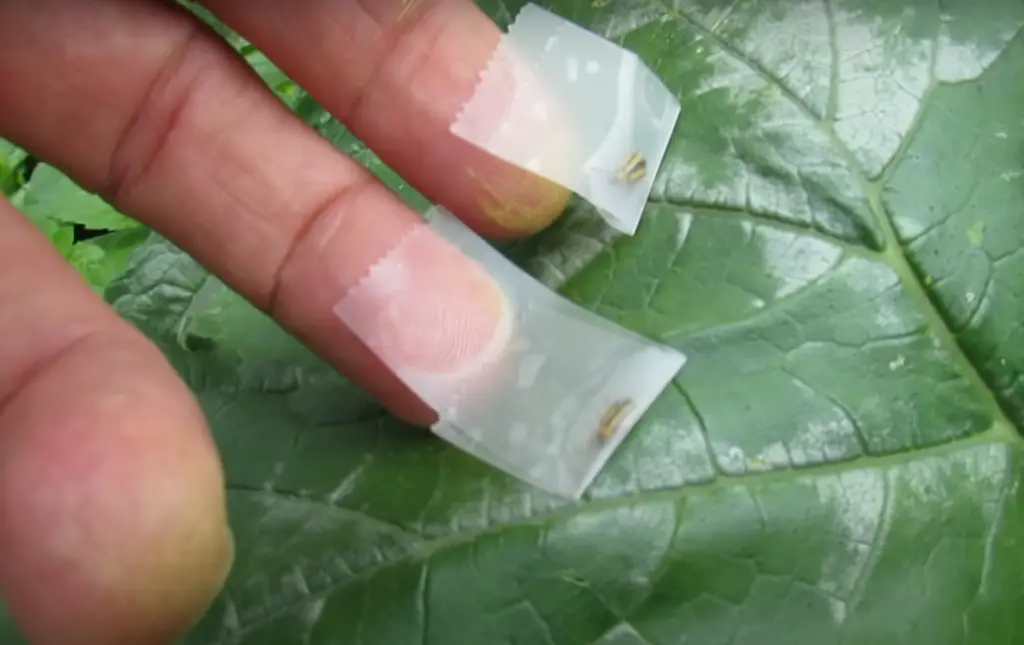
Knowing the signs of a pest infestation can help you take steps to prevent an outbreak or manage it when one occurs.
Discoloration
One common sign of a pest infestation is discolored leaves or stems on your plants. This could be caused by caterpillars eating away at foliage or other insects that secrete waste on plant surfaces. Discoloration can also indicate nutrient deficiencies as well as fungal disease and should be addressed promptly regardless of what kind of pest is present.
Wilting
Pests like spider mites can cause foliage to wilt and curl, making it appear lifeless. This is usually a sign of extreme infestation as the bugs are sucking out the moisture from the leaves. [1]
Holes in Leaves
Small holes in leaves or stems are indicative of leafminers or other chewing insects that have invaded your plants. These pests may also leave behind droppings which should be examined to determine what kind of pest is present.
Discarded Skin
Slugs, caterpillars, and some beetles will shed their outer skin as they grow, leaving behind brown shells on the plant’s surface or near it.
Unusual Sounds
Some insects like cicadas are incredibly loud and can be heard from a distance. Other bugs may produce clicking or buzzing noises. Pay attention to any unusual sounds you hear coming near your plants as it could be a sign of an infestation.
Strange Odors
A pest infestation can often produce a strange odor that’s difficult to pinpoint. If you notice an unusual smell near your plants, it’s possible that you have an insect problem. [2]
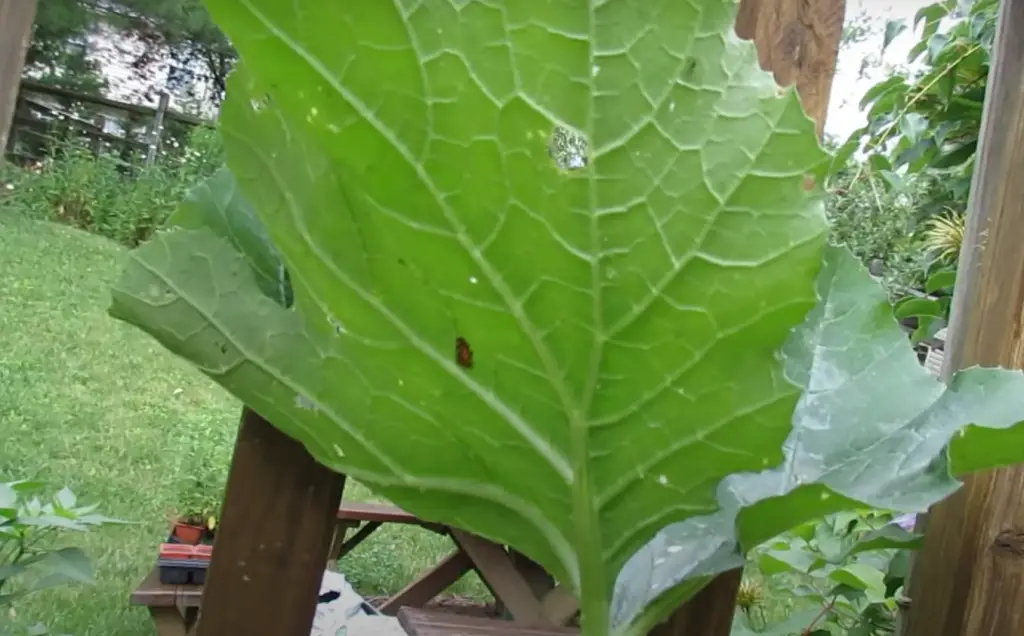
By being aware of the signs of pest infestations, gardeners can take steps to keep their plants healthy and protect them from damage caused by pests. In some cases, enlisting the services of a professional exterminator may be necessary in order to fully eliminate the problem. In either case, early detection is key in pest management and can help you keep your plants looking their best.
How To Identify Insects and Their Eggs On Plants?
Insects and their eggs can be identified on plants through careful observation. It is important to take note of any changes in the plant’s foliage, as this can indicate that an insect infestation has taken place. If you suspect that an insect infestation has occurred, look for signs such as holes or damage in leaves, discoloration or wilting of the leaves, unusual growth patterns, webbing between branches and other symptoms related to a particular type of pest.
If you do suspect a presence of insects on your plants, use a magnifying glass to observe them more closely. Different types of insects will have different markings and colorations. Take photos or notes of what you observe so that you can compare it with reference images online or in a field guide.
In addition to looking for insects, you should also look for egg masses on the plants. Many types of pests lay eggs on plants and these can be identified by their size, shape, and color. The eggs may be found among the leaves or along the stems of the plant. In some cases, an insect predator may have left behind its prey’s eggs. These will usually appear as empty shells that are often white or light-colored in color. [3]
If you cannot identify exactly what type of pest is present, consider consulting with a professional who can help diagnose the issue and recommend a treatment plan to eradicate it from your garden or landscape. With careful observation and proper identification, you can easily identify insects and their eggs on plants.
What Insects Lay Eggs In The Soil?
There are several species of insects that lay eggs in the soil, including ants, termites, cockroaches, and crickets. Most species of ants will tunnel underground to deposit their eggs in mounds or nests that they have created. Termites commonly construct intricate tunnels and chambers into which they deposit their eggs. Cockroaches typically lay their eggs in dark crevices and cracks near damp areas such as bathrooms and kitchens while crickets can be found laying their eggs in moist soil or rotting wood material.
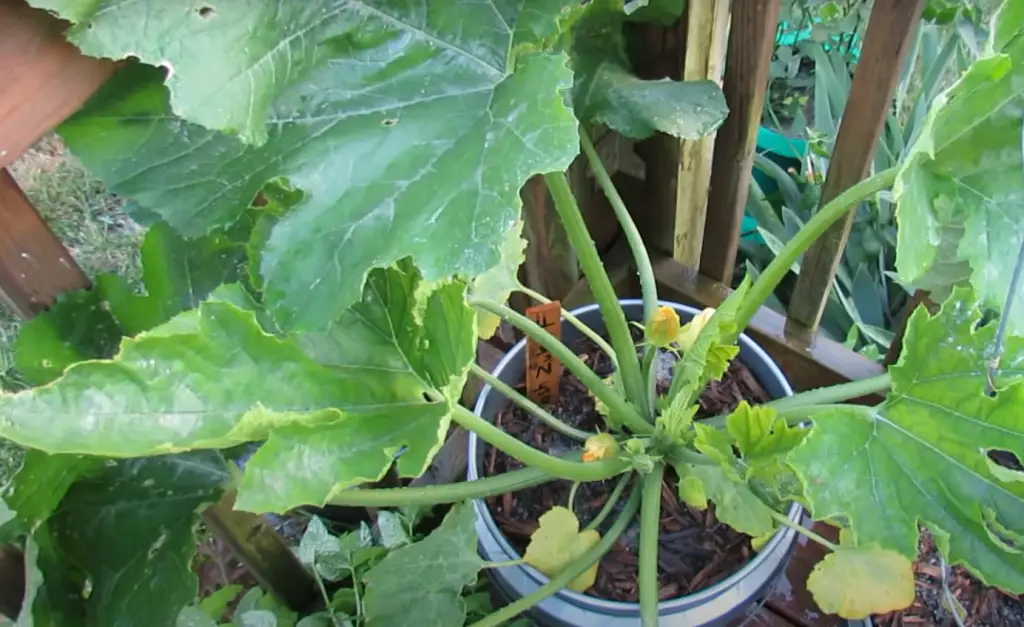
While some insect larvae may hatch from the egg immediately, many require a period of gestation before emerging as adults. In addition to these common insect species mentioned above, there are also several other rarer types of insects that may use the soil as a site for egg-laying, including certain species of beetles, millipedes, and moths. Regardless of the type of insect laying eggs in the soil, it is important to make sure that the area remains free from too much moisture or disturbances to ensure that larvae hatch successfully. [4]
In addition to insects laying eggs in the soil directly, some animals use the soil environment as an ideal place to lay their eggs. Frogs and reptiles such as snakes often bury their eggs in soft soils where they can remain safely tucked away until hatching time. Additionally, certain birds are known to use the camouflage properties of loose topsoil or dirt as a way to hide their egg clutches from potential predators. While these animals may not be utilizing the soil in the same way that insects do, they certainly can make use of its protective qualities to ensure their eggs have a safe place to develop.
No matter what type of insect or animal is laying eggs in the soil, it is important to treat them gently and with respect. While some individuals may find it tempting to disturb an egg clutch or mound, this could potentially put any larvae at risk of dying before hatching. Soil-dwelling animals and insects provide an important service to our environment by providing food sources for other species as well as helping keep populations of harmful pests under control, so it is important that we keep these creatures safe.
But sometimes plant pests can also lay eggs. The Colorado potato beetle for example, is a pest that can reproduce quickly and lay eggs in the soil.
If you do find signs of potential insect infestations, contact an expert who will be able to provide advice on how to deal with the problem without harming any beneficial insects or animals. [5]What Is Camouflaging In Insects?
Camouflaging is an important strategy used by insects to protect themselves from predators. It involves blending in with the environment in order to remain unnoticed and avoid being identified as a potential prey or threat. [6]
Insects use camouflage in a variety of ways, such as changing their coloration, using body patterns, and even mimicking other species. This helps them blend into their surroundings so that they can remain hidden until the threat has passed or until they are ready to attack.
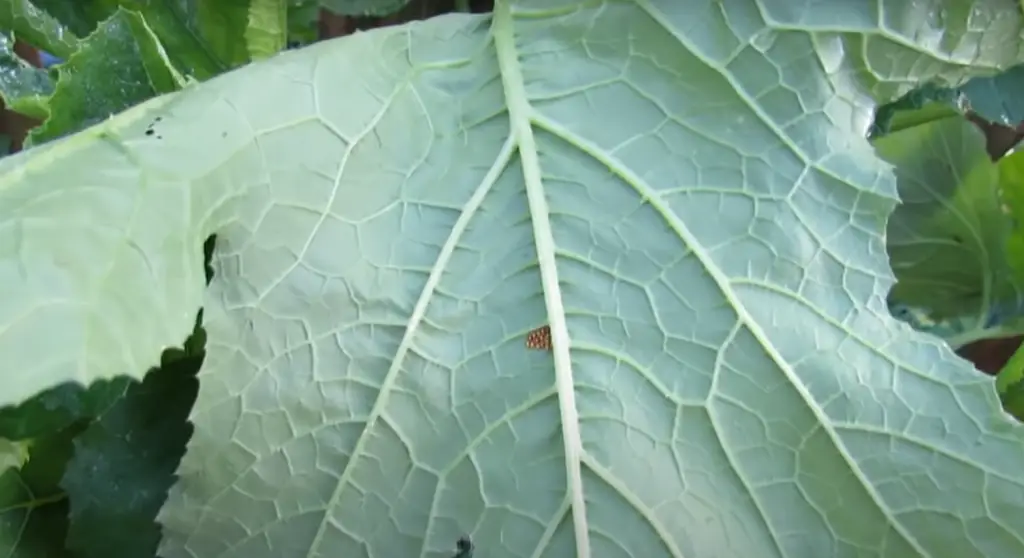
Camouflaging also allows insects to stay close to food sources without being detected by predators. By blending into the environment around them, camouflaged insects can go about their day-to-day activities without having to worry about being seen and eaten by hungry predators. [7]
What Insect Eggs Look Like Seeds?
Insect eggs can vary dramatically in size, shape and color. Some may look like seeds, while others may be much larger or more oblong-shaped. Many are translucent or light-colored, making them difficult to spot without a magnifying glass or microscope. Some insect eggs resemble tiny grains of rice, ovals, cylinders or even clusters that are stuck together. The most common colors range from white to yellow to brown and black. Depending on the species, some may also have spots or stripes for camouflage. All insect eggs contain embryonic material that will eventually become larvae or pupae if conditions are favorable for survival. The eggs must therefore be protected by the female until they hatch into larvae which then grow into adult insects – this is why some species lay their eggs inside the body of their host. [8]
Since insect eggs are so small, they can easily be confused with other seeds or debris. To tell them apart, examine the egg closely for a distinct shape and color that is not found in nature.
In addition, many insects deposit a gluey substance around the egg to protect it from predators or environmental conditions like temperature fluctuations. This gelatinous material also helps to distinguish them from non-insect objects such as seeds or dust particles.Pests that lay seed-like eggs include bedbugs, deer ticks, rice qeevils, aphids, bread beetles, thrips, spider mites, Colorado potato beetles, Japanese beetle, flea beetles and flea eggs. To identify them, look for their characteristic shape and color:
- Bedbugs: Small, round, translucent eggs that are white or cream-colored.
- Deer Ticks: Translucent and oval-shaped eggs.
- Rice Weevils: Small, dark brown or black egg clusters stuck together in a mass.
- Aphids: Clear, elongated eggs often found on plant leaves.
- Bread Beetles: Small, light-brown to yellow eggs with a glossy finish.
- Thrips: Light-colored ovals with a waxy coating.
- Spider Mites: Long cylindrical eggs with pointed ends.
- Colorado Potato Beetles: Dark green to black elliptical eggs.
- Japanese Beetle: Reddish-brown to black egg clusters stuck together.
- Flea Beetles: Small, round, yellow eggs that may have a slightly glossy finish.
- Flea Eggs: Tiny, translucent white oval-shaped eggs. [9]
Why Do Some Insects Lay Eggs That Look Like Seeds on Plants?
This practice is known as oviposition, which is the process of an animal laying eggs in a specific area or environment. This behavior helps protect the eggs from predators while they develop into adults. Additionally, it allows them to remain close to their food source and ensures they have access to all the resources needed for successful development and reproduction. By camouflaging their eggs among seeds, these insects are also able to avoid detection by potential predators until after the eggs hatch and they become mobile enough to escape danger. Some species will even hang onto the plant with specialized appendages until their young can disperse safely. Although this behavior does not benefit other organisms directly, it does play an important role in safeguarding the future of these insects.
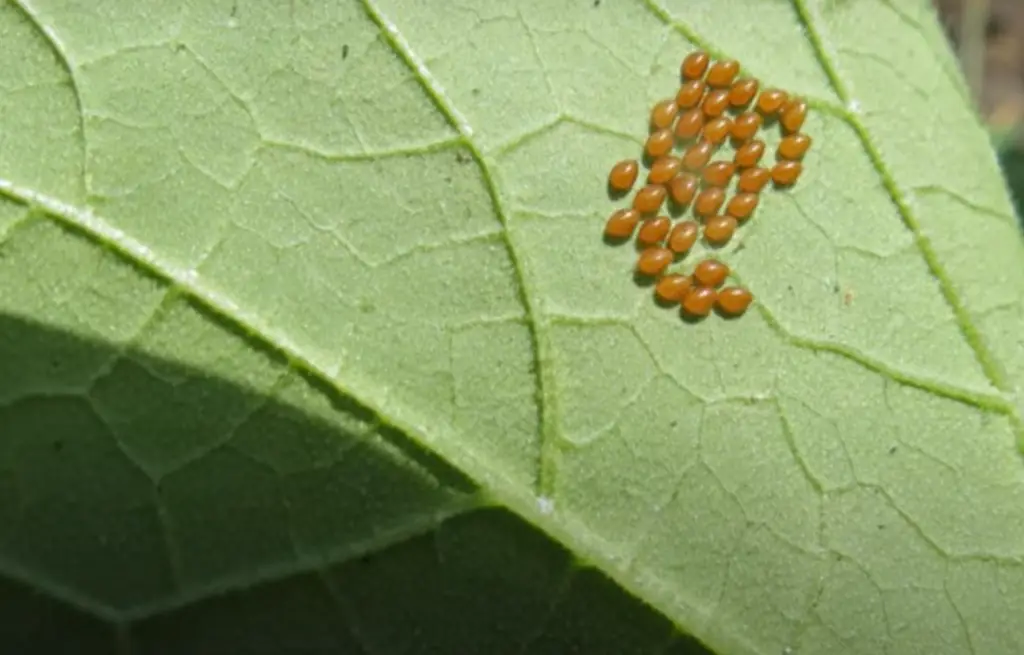
Furthermore, when insect eggs are laid on plants, they can also benefit from nutrient-rich fluids that the plant secretes to feed the developing larvae. This helps provide sustenance and may even improve the odds of survival for certain species. Additionally, by laying their eggs close to a potential food source, some insects can reduce dispersal times and ensure their young have enough time to reach adulthood before winter sets in or other environmental factors become too extreme. All in all, this is why some insects choose to lay eggs that resemble seeds on plants. It’s both an effective way for them to evade predators and find adequate nutrition for their offspring.
How to Get Rid of Insects and Their Eggs on Plants?
- Start by removing any affected leaves or branches from the plant. Discard them in the trash and wash your hands afterwards to prevent spreading of any eggs or larvae.
- Inspect the rest of the plant for eggs and larvae, paying special attention to leaf axils and undersides where they are likely to be found. Carefully remove any you find with tweezers without crushing them so that their contents don’t spread onto other parts of the plant. Dispose of them in a sealed plastic bag away from other plants.
- Spray the entire plant with a strong, horticultural-strength insecticidal soap made specifically for plants (not a kitchen spray cleaner). Be sure to thoroughly coat both top and bottom sides of the leaves, along with the stems. [10]
- If you find evidence of insect infestation in soil such as larvae or worms, apply a broad spectrum insecticide drench to treat the entire plant, including the roots. Follow instructions on how to use any products carefully!
- Before returning the plant to its potting container, check for insects one last time and remove anything that you may have missed earlier. Discard in a sealed plastic bag away from other plants. Then return it to its container and cover with fresh soil if necessary.
- Monitor your plant closely over the next few weeks for additional signs of pests or eggs before allowing it back into an area where it could potentially spread them to other plants.
- Maintain good cultural practices such as providing adequate drainage and light levels, avoiding over-watering or overcrowding of plants, and regularly checking for pests on all plants. This will help reduce the chances of infestations in your home and garden. [11]
Will Pest Control Treatments Help Plants?
Pest control treatments can help to keep your plants healthy and free from pests. The key, however, is finding the right type of pest control treatment for your particular plant or garden. Different types of pests require different methods of treatment, so it’s important to assess the situation before you move forward with any type of pest control treatment.
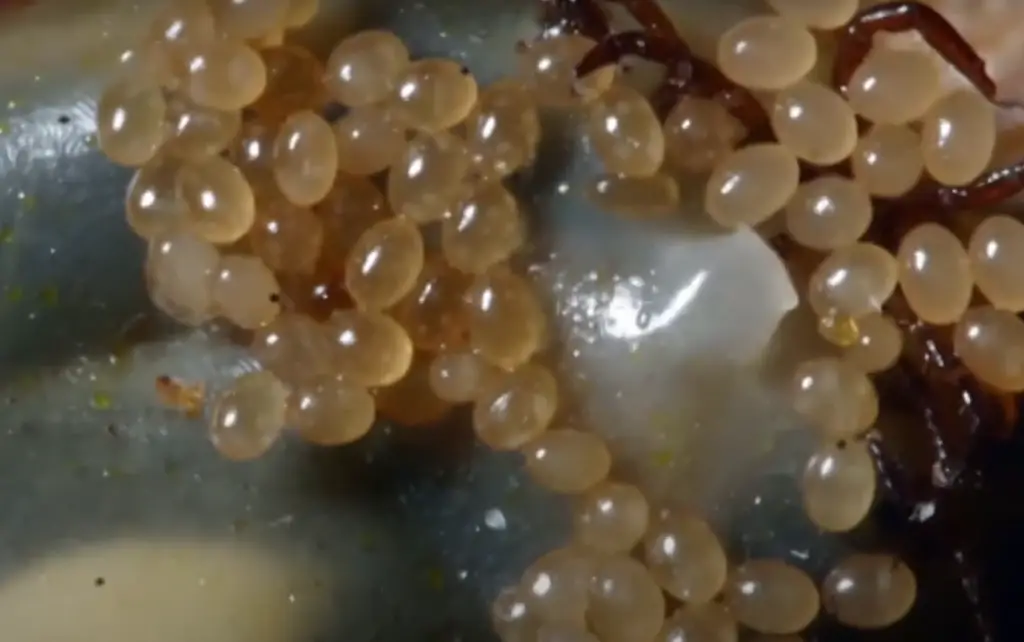
When thinking about which kind might be best for your plants, look at what type of infestation you’re dealing with and how severe it is. If it’s a minor problem, such as an occasional ant on a flower pot or aphids on a few leaves, then there are some simple steps that can be taken to eliminate the pests without resorting to chemical treatments. For larger problems, such as an infestation of caterpillars or an invasion of aphids, more aggressive action may be necessary. Chemical pest control treatments might be required in these cases.
It’s important to note that when using chemical pest control treatments, you should always read and follow the instructions carefully so as not to damage your plants or harm any beneficial wildlife in the area. Additionally, it’s important to remember that even with proper treatment, some pests can still survive and reproduce if conditions are favorable. This is why it’s important to take preventative measures such as keeping your garden free from weeds and debris and inspecting for signs of infestation regularly. [12]
FAQs
How do you remove insect eggs from plants?
To remove insect eggs from plants, you can use a variety of methods. These include physical removal (such as pruning affected areas of the plant or using a vacuum cleaner to suck up the eggs), spraying an insecticidal soap or horticultural oil on the leaves and stems, coating the plant with diatomaceous earth, or treating it with neem oil. Additionally, maintaining healthy plants by regularly fertilizing and providing adequate amounts of water and sunlight can help keep insect populations at bay. If all else fails, contact your local garden center for more specialized advice.
What bug lays eggs that look like seeds?
It is the cucumber beetle. The larvae of this pest lay eggs that resemble small white seeds, making them difficult to spot. They feed on cucumbers, melons, and squash plants, so if you find these pests in your garden it’s important to take action quickly. Cucumber beetles can be controlled with insecticides or by manually removing the adults from plants and destroying their eggs. Taking steps to remove weeds and debris near your vegetable beds can also reduce the number of cucumber beetles present in your garden. With proper prevention and control measures, you will be able to protect your vegetables from damage caused by these pesky little bugs.
What are the bugs that look like small seeds?
There are several small bugs that look like tiny seeds, including carpet beetles, grain mites, and spider mites.
They have a varied coloring of white, brown and black which makes them appear very much like small seeds. Grain mites are also very tiny, measuring between 0.1 and 0.2 millimeters in length. They vary in color from yellowish to reddish brown depending on their stage of life cycle. Spider mites measure less than 1 mm long with two dark spots or stripes on the back side of their body making them look similar to a small seed. All three types of these bugs can be found in or around grain, seeds, and pet food storage areas.What bug eggs look like flax seeds?
Bug eggs vary significantly in size, shape and color depending on the species of bug that laid them. Generally, however, most bug eggs are small and resemble flax seeds or tiny grains of rice. Some species lay their eggs in clusters which may be larger than a single flax seed, while many others lay individual eggs which can easily be mistaken for the small flaxseed-like granules. Regardless, bug eggs usually have distinct colors that may range from yellow to white to pale green.
Useful Video: Identifying the Squash Bug & Eggs 100%: Start Looking Now! – Prevention & Treatment Link
Wrapping Up
Pests and their seed-like eggs can be an annoying problem in any garden, but they are also a common one that you can control. With the right pest control strategies, like keeping your plants well fed and watered, or using natural solutions like neem oil, you can keep your garden free from pests. It is important to recognize when there is an issue with pests in your garden and then work diligently to correct it as soon as possible so that your plants will remain healthy and thriving! Whatever pest control method you choose to follow, it’s sure to help lead to a prosperous garden full of flourishing vegetation.
References:
- https://maggiesfarmproducts.com/blogs/bug-help/signs-your-plants-have-a-pest-problem
- https://www.ourhouseplants.com/guides/house-plant-pests
- https://plantscraze.com/insect-eggs-on-leaves/
- https://thegardenhows.com/insect-eggs-in-garden-soil-identification-prevention/
- https://theyardandgarden.com/yellow-insect-eggs-in-soil/
- https://study.com/learn/lesson/camouflaged-insects-mimicry-examples.html
- https://www.treehugger.com/amazing-examples-of-insect-camouflage-4869256
- https://pestweek.com/bug-eggs-like-sesame-seeds/
- https://gardeninghood.com/insect-bug-eggs-that-look-like-seeds/
- https://www.homesandgardens.com/gardens/how-to-get-rid-of-bugs-from-houseplant-soil
- https://www.skh.com/thedirt/how-to-get-rid-of-bugs-in-houseplants/
- https://www.flick.com.au/blog/is-pest-control-harmful-to-my-plants/










Leave a Reply
View Comments